Adar Pelah is a Reader in Electronic Engineering, specialising in medical diagnostics and rehabilitation technology.
He teaches medical imaging and supervises final-year projects.
When I did my PhD at Cambridge, my research spanned engineering and physiology. Prior to that, I was more on the engineering side, including computer science and applied mathematics, and worked a few years for some high-tech companies in Silicon Valley in California. Before coming to York, I was a postdoctoral fellow at Cambridge and UCL, followed by a lecturership at Cambridge, and a professorship at Harvard Medical School.
I’ve always been interested in applying aspects of life sciences (especially the natural features of human cognition) to technology, and using technology to understand cognition, human processes and intelligence. So, I combine the biological and the engineering sides - one kind of feeds into the other.
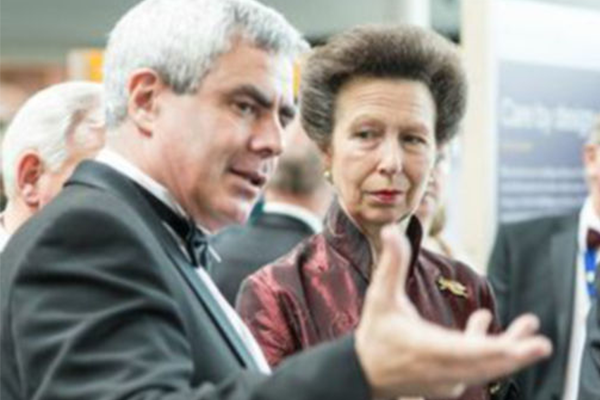
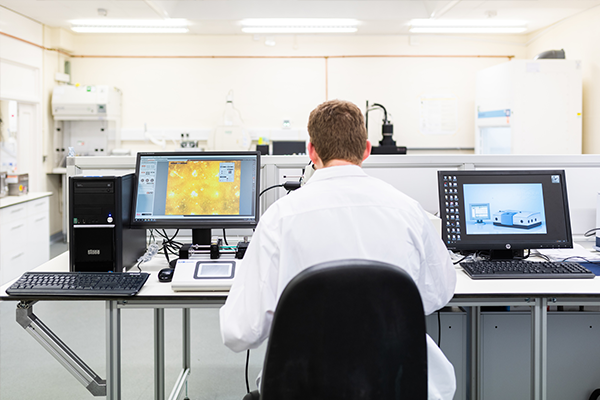
Micro-mechanical engineering lab
One way to think about it is: with engineering, you construct new technology - you invent things to solve problems. Whereas with physiology, and mainly neurophysiology in my case, it’s like reverse engineering. You have a system that works really well, unsurpassed in many ways - the human mind, the human body - and you reverse engineer it to understand its mechanisms. For me, they’re two sides of the same coin.
This means you can apply similar methods between the two disciplines. You’re applying investigative methods to undertake the 'reverse engineering', but you understand it using the principles of engineering. The body and mind are really engineering systems. Who knows how they were designed, and by whom, but it’s a system that works, and has certain functions and some limitations, much like an engineered design.
I was initially interested in the human visual system, and using what we know to create artificial ways to model and understand it. But then I made a chance discovery, which moved my research in a different direction.
I bought a treadmill to do some exercise, I put it in my apartment in Cambridge, and I started running on it. I discovered this strange effect you get after you run on a treadmill and then walk in the real world - a sense of visual confusion, of acceleration. It feels as if your visual world is moving faster than you are. I was a postdoc student at the time, and I mentioned it to my supervisor, who was very interested. We started looking into it, and it ended up being a paper we got published in Nature magazine, as the Pelah-Barlow effect - it was even on the front cover.
During this research, I built locomotion simulators, and they gradually got better and more sophisticated as the project went on over the years. I learned a lot about how to build virtual simulators of various kinds, understanding how virtual reality works, how to present virtual images and make them as immersive as possible. I spent time playing with the parameters, and trying to figure out what's important to the brain and the body and what is not. I learned how to match the display to the physical motion you’re creating as you move in a virtual environment.
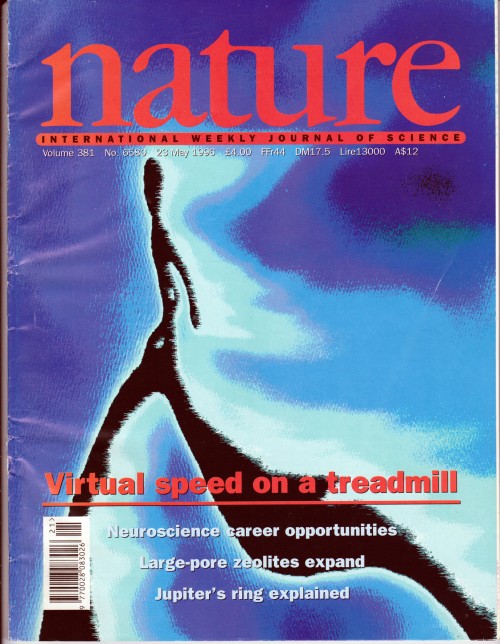
On the cover of Nature magazine
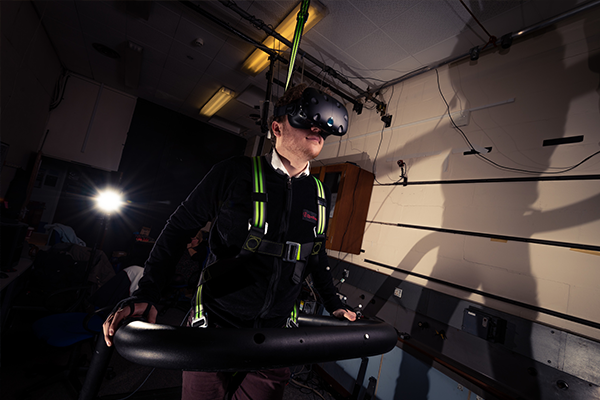
I found applications for the technology I'd been developing in medical rehabilitation and assessment of movement. For the last few years, my team at York, and our collaborators in the NHS, have focused on minimising the cost and maximising the medical potential of these systems.
We developed ways to use them for diagnostics and rehabilitation in conditions like stroke or osteoarthritis. We started building artificial intelligence networks that will input the movement of a person, and detect things like a clinical need for hip replacement surgery, or early-stage Parkinson’s disease – both neurological and non-neurological conditions. We’re in the process now of trying to miniaturise it, so as to make it mobile. We want to be able to use a smartphone, in a clinic or at home, and capture a video of someone walking for a few steps, feed that into the Cloud, apply machine learning and artificial intelligence (AI) algorithms, and come back with an accurate diagnosis of their medical condition.
I teach Introduction to Programming in the first year. This module builds the foundations for students to do the kind of work I do in my lab. Every year, students tend to come to us more and more prepared in programming, but there’s still a good number who have almost no background in software engineering or in programming. And that's totally fine - this module gets everyone up to speed.
I also supervise final-year projects, which I have to say is my favourite part of teaching. It’s one-to-one, and it really focuses on the critical research and applied areas that reflect the way I carry out my own research. From the standpoint of someone who’s trying to carry out research with these students, as well as give them the opportunity to investigate their own interests, they produce such great stuff.
There's sometimes the possibility, for students who are very keen on programming, of doing some work with us in my lab, the Laboratory for Intelligent Virtual Environments (LIVE). They come in and help us with the projects, and it helps them see the applied and the research side of coding really early on.
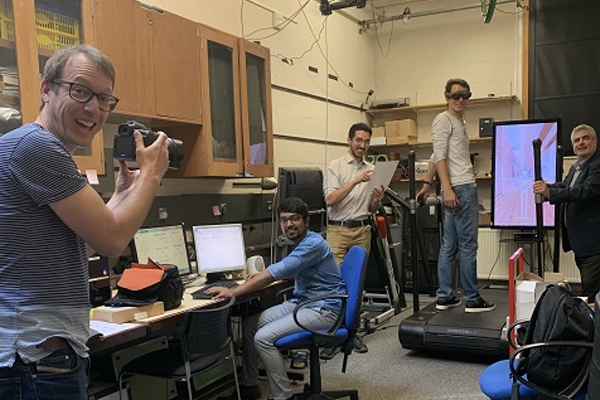
At work in the Laboratory for Intelligent Virtual Environments (LIVE)
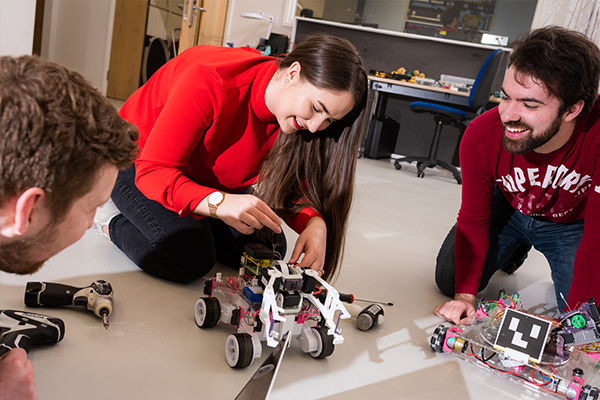
The best thing about what we do is bringing students to the coalface of what real engineering is as early as possible. I love exposing students to real, project-based learning, which we do from day one. I think that’s absolutely essential, particularly in areas such as engineering, so that you start to build the foundations of what you’re going to be up against in the real world.
Sometimes, students are funded by our associated spin-out companies to do particular bits of work. Some are summer projects. So, as soon as we can bring them onto it, they have that exposure to the commercial and industrial world. It shows them the relevance of the style of learning they're doing for the rest of the course.
We have so much exciting research going on at York. Many of our academics have collaborations with big and interesting companies. A handful of them run spin-out companies, as I do.
Seek those opportunities. Talk to the staff about their interests, what they do when they’re not teaching. Look at non-standard, non-conventional ways of exploring the richness of the environment, the facilities, and the people who are involved in it. You can do this through your supervisor: say, “I’m really interested in AI, or nanotechnology; who can I talk to about some crazy ideas I have?” And your supervisor will say, “This person works on AI, this person works on nano, so have a chat with them”. It might lead nowhere, but it might lead to an amazing project or collaboration. You never know where it might lead your career in the future.
If you have any questions about electronics and engineering at York, then please feel free to get in touch. We’re always happy to discuss your course, our research, or anything else you want to know about.
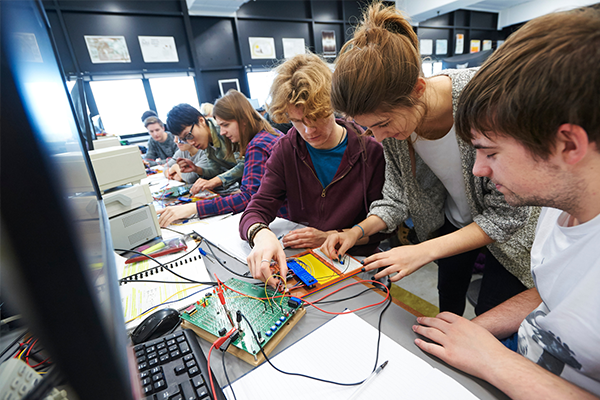
For any support or guidance on completing your journey to York, we're always close at hand.